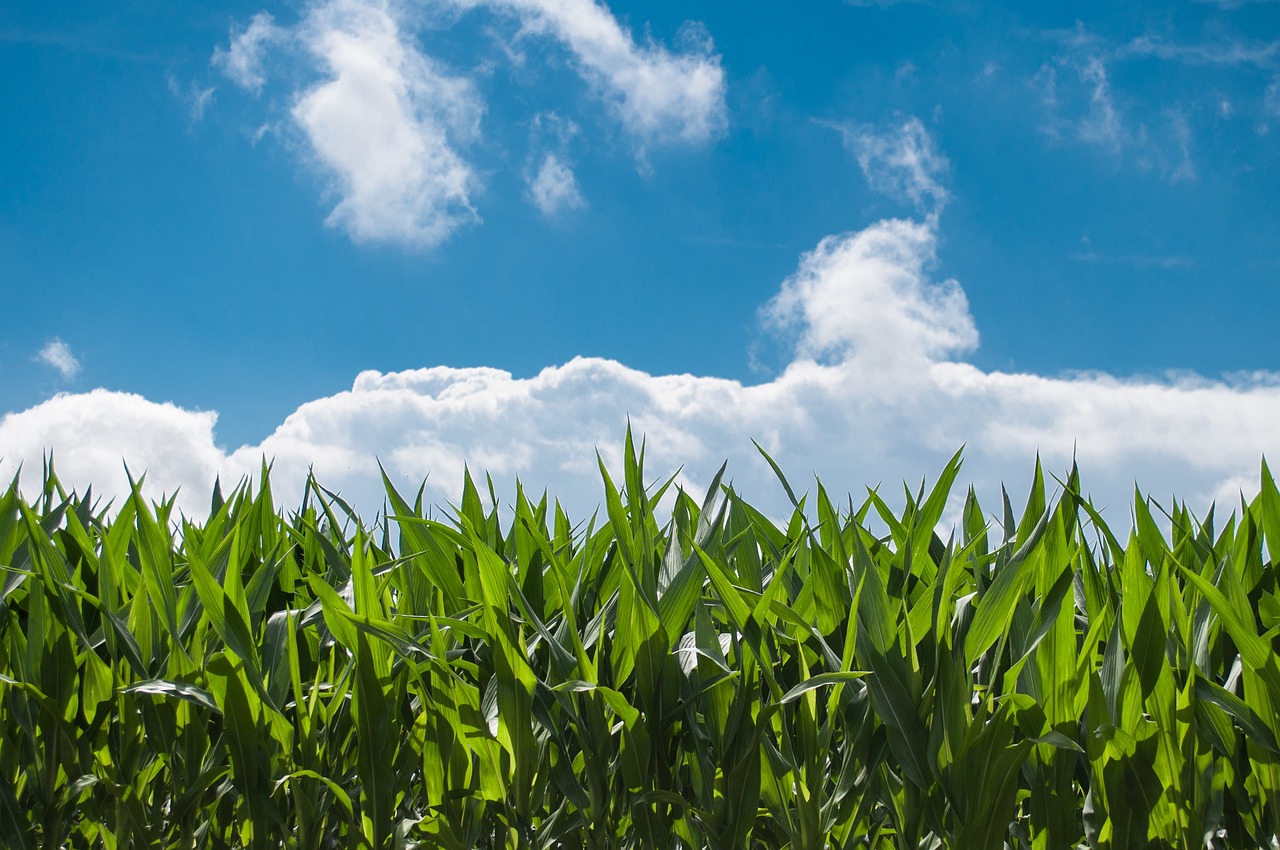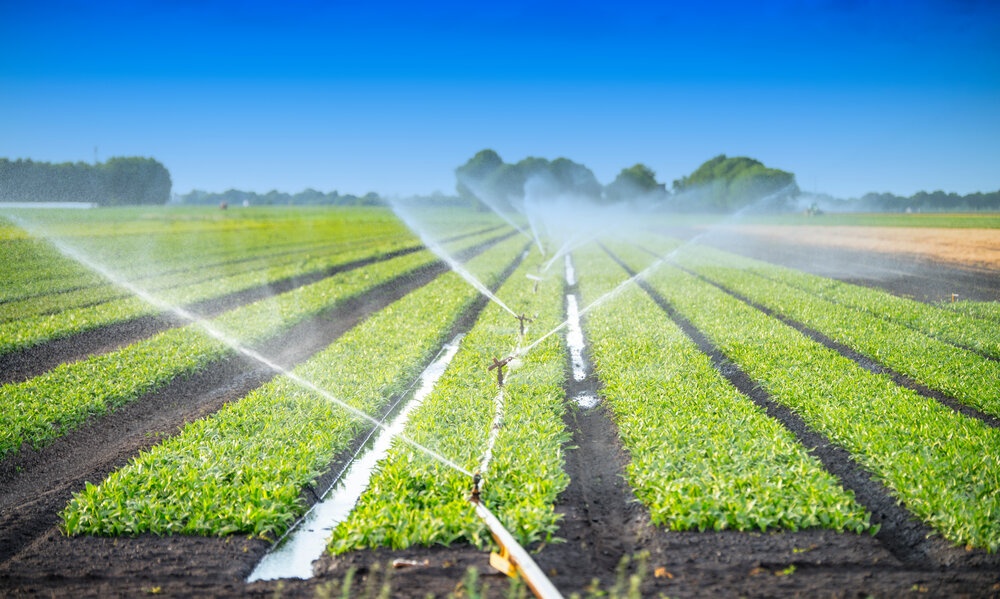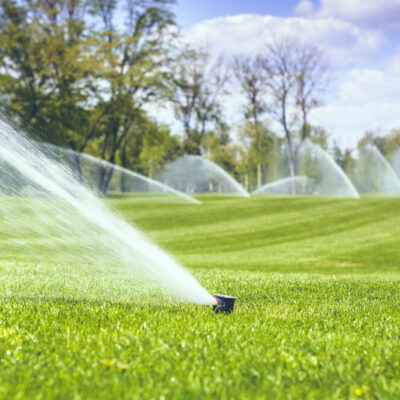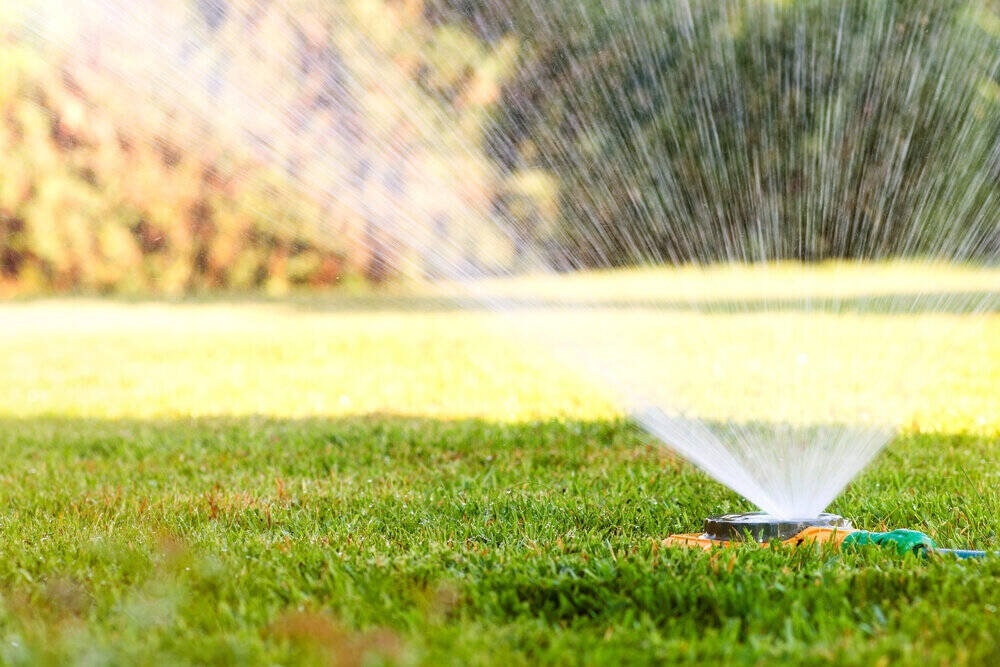The frequency with which farmers should water their crops depends on several factors. They include:
- The nature of the crop.
- The climate in which the crop in question is being grown.
- The type of soil in which the crop is planted.
- The growth stage of the crop in question.
Let's take a quick look at each of these elements individually.
Crop Type
Crops have different watering needs, dependent on their type. Crops such as cranberries and rice, for example, require consistently moist conditions, whereas, at the other end of the scale, crops such as cacti and succulents grow in hotter, more arid areas and have adapted accordingly to be able to thrive with less water.
Climatic Environment
Climate is a key component when it comes to how often crops have to be watered and whether it is even practical to do so.
Temperature, humidity, and the pattern of rainfall all play a part in determining how often watering has to take place. Crops grown in hotter, drier regions require more frequent irrigation, while those grown in cooler, more humid circumstances thrive with less frequent irrigation.
Nowhere is the power of irrigation more apparent than in the Atacama Desert in Chile. This region experiences only 0.6 inches of rain per year, with some regions of the desert receiving only 0.04 inches. But when rare rainfall events take place – something like once every 7 years - the dry, arid landscape bursts into bloom.
The Type of Soil
The type of soil is another key factor. Sandy-type soils drain rapidly, and crops, depending on type, could therefore require more frequent irrigation. At the other end of the scale, clay-rich soils will retain water longer, and as a result, crops grown in them tend to need less frequent watering.
The Growth Stages of Crops

The growth stage of a particular crop is another consideration in the irrigation frequency determination. Newly planted seedlings or young, transplanted plants need more frequent watering in order to help establish their root systems. More mature, established plants usually require less watering once their root systems have become well-established.
Different crops become vulnerable to water stress at different times during their growth stage processes. As a rule of thumb, the process of reproduction is sensitive to low moisture. A crop's resistance to plant disease and the yield of the crop being grown are affected by the amount of moisture available, which is why it is just as important for farmers to manage the frequency of irrigation as much as it is when to commence harvesting.
The reproductive stage of a crop refers to the time when the crop flowers, but it also includes the seed/grain-filling stage.
It is during these phases that the irrigation demands are at their highest. This will also be affected by the amount of sunlight available, wind conditions, and temperature.
What is Water Stress?
Water stress comes about when the demand for water is greater than its availability at certain times, or when poor quality causes restricted use. This is typical of areas that have low rainfall, where populations are dense, or when industrial or agricultural activities are intense.
Even if there is sufficient long-term freshwater available, annual or seasonal variations in water availability can induce water stress.
Water Stress in Wheat

Let’s take water stress in wheat as an example. As wheat reaches its flowering stage, the roots can be found as deep as three feet below the surface of the ground. However, earlier in the growth stage, the roots are still quite short.
Wheat is very sensitive to water stress when the plants are producing tillers. If the soil is dry for long periods during the tiller-producing phase, the crop yield could be affected. The tiller quantity per unit area is lessened with there is a shortage of rainfall – especially during a drought year.
If this happens, farmers may need to ensure irrigation takes place during this growth stage to try to achieve optimal yield.
When Irrigation Should Start
Generally speaking, the irrigation process ought to start when approximately 50% (not more than 60%) of available moisture has been taken up from the root zone of the crop, where most of the root is concentrated.
The stage in the crop growth cycle referring to the critical periods of growth, must also be considered when devising an irrigation plan.
There is a very useful chart on the ukia.org website – section 5 - Irrigation Scheduling and Crop Response Periods – you might find of interest.
While the plant watering information on the ukia.org website is very useful, and the information regarding water monitoring techniques in section 6 is also helpful, the discussion about soil moisture monitoring solutions is a little out of date. It was published in 2012, and in the meantime, technology has moved on, and systems that were being tested are now in use across the board in the digital farming world.
State-of-the-Art Soil Monitoring Systems
How often farmers water crops no longer has to be down to a mixture of informed guesswork and experience. For those that can afford it (typically farmers in developed countries), state-of-the-art soil monitoring systems that use TDR technology are the answer.
What is TDR Technology?
The initials "TDR" stand for “Time Temperature Domain Reflectometry.” A Time Domain Reflector is a meter that launches voltage down a transmission line in a similar way to a ripple that travels down a rope tied to a tree. When it reaches the end of the line, it is reflected back. By accurately measuring the time the return takes, you can accurately determine the permittivity of the medium – in our example – soil. Using this data, water content can be accurately measured.
In 2001 a company called Acclima patented a method for transmitting and receiving rapid rising step functions and measuring their propagation time through soil accurately, within trillions of a second. They miniaturised the transmitter, generator and circuitry and incorporated them into small, low-cost soil sensors, or Time Domain Transmissometers (TDTs).
This all-in-one function device avoided the necessity of having to separate the reflected wave from the initial wave.
TDT technology is simpler than TDR to implement, and it can be used in more conductive soils. However, whereas TDT sensors require soil to be excavated to allow installation (to protect the looped rods from damage), after which the soil is repacked.
Acclima's TDT sensors drastically reduced the cost of implementing TDR-style technology from tens of thousands of pounds to only hundreds, with the practicality of TDT installation becoming a permanent fixture. This provides accurate soil moisture readings on the back of established TDR technology, but at a fraction of the cost of a conventional TDR installation.
This webpage on the soilsense.io website illustrates the TDT excavation installation method.
TDR sensors have pointed rods that can be more easily pushed into the soil. However, TDT technology claims to be able to avoid you being given potentially misleadingly high measurements.
Changing How Farmers Guestimate Irrigation Cycles
By making use of the latest technology in terms of smart soil moisture sensors and the associated software, farmers are shown when and how much water to deliver. It can improve crop yield, conserve water, and reduce water bills.
This aspect of digital farming means you’ll be able to forecast when crops could begin to experience water stress and, conversely, when you're over-irrigating.
There are many types of soil moisture monitoring sensor systems on the market. Finding the right one for you will be driven by your farming and irrigation goals. But when you install a system that utilises Cloud and IoT technology, how often you water crops in future can be driven remotely by accurate agricultural science data.
Sources
https://acclima.com/accurate-affordable-reliable-tdr-soil-moisture-sensor/
https://soilsense.io/sensors-en
https://www.ukia.org/docs/booklets/water%20management%20for%20field%20vegetable%20crops.pdf


